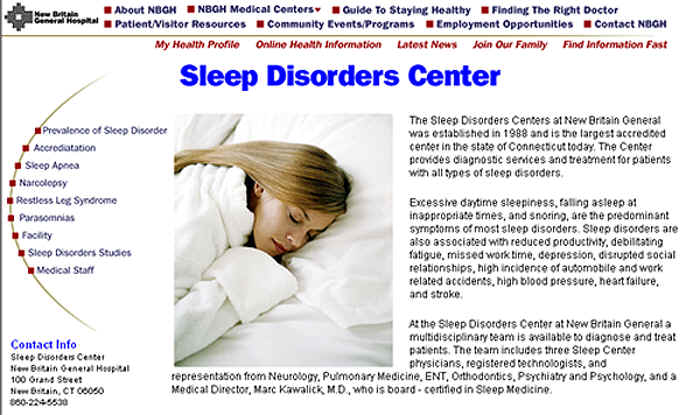Look for:
They may be labeled:
|
1) RELEVANCY |
|
Evaluation takes place in the context of your research task. What do you need? |
Ask yourself:
Does this Web site provide the kind of information that I need?
Look for:
They may be labeled:
|
|
For example, the When was the organization first established? Send your findings to mfpriebe@kings.edu. Title the Subject of the email NBGH. |
 |
| The letters near the end of an Internet address may give you an indication of the site's sponsor, and therefore, some insight into its content. At one time, one could solely rely on the URL address to determine the intent of a particular Web site. Currently, Internet addresses are not often screened to ensure that they follow these informal rules. |
Web addresses typically have one of the following designations:
| .com - commerical | .org - non-profit or research organizations |
| .edu - education | .mil - military |
| .gov - government | .net - network-related information |
Example:
New Britain General Hospital:
http://www.nbgh.org/sleep.html
Sites located outside of the United States will have domains that indicate the
country of origin:
au (Australia); ca (Canada); fr (France); it
(Italy); es (Spain); uk (United Kingdom)
Example:
Sleep Disorders Laboratory (Canada) -
http://www.kgh.on.ca/kgh/SLEEP/sleep_home.htm
Web pages published by an individual usually contain a tilde (~) in the URL.
Example:
http://members.tripod.com/~sleephealth/
According to Bare Bones 101, an online tutorial at the University of South Carolina, "in mid November 2000, the Internet Corporation for Assigned Names and Numbers (ICANN) voted to accept an additional seven new suffixes, which are already in operation or preparing to come into operation:"
They are:
|
.aero -- restricted use by air transportation industry .biz -- general use by businesses .coop -- restricted use by cooperatives .museum -- restricted use by museums .name -- general use by individuals .pro -- restricted use by certified professionals and professional entities |
2) PURPOSE/OBJECTIVITY |
You should recognize a Web site's primary purpose or mission as you consider its value for your project. Is the goal to inform? Persuade? Sell something? Entertain? Provide information?
Web sites can usually be placed into one of the following categories:
Advocacy or "soap box" sites
Commercial/Marketing sites
Reference/Information sites
See the chart below for more information about each type.
|
Type |
Purpose |
Produced By |
Description & Examples |
|---|---|---|---|
| Advocacy | Influence public opinion | Organizations, pressure groups, or individuals |
Advocacy sites may provide a wealth of information, but they usually promote a
singular point of view or particular position on a given subject.
Generally, opposing viewpoints are not represented. If you detect an imbalance of information, you may need to search
elsewhere for varied opinions. Examples: American Insomnia Association National Association of School Psychologists |
| Commercial/ Marketing |
Promote or sell products and services | Companies or businesses | Commercial/Marketing sites may provide short articles,
reviews, or other information
that promotes or
sells company products to viewers. These sites are designed to attract
readers to their site and could be biased in their opinions. You may
need to search elsewhere for more objective information. Examples: Herbal Remedies.com Sleepmate: Innovative Products for Sleep |
| Reference / Information | Provide access to factual information or other useful services |
Universities, government agencies, publishers, individuals | Reference/Information
sites are not designed to promote a specific viewpoint or product, but are usually created to offer a full range of information on a particular topic or subject area. Examples: Sleepnet.com Gale Encyclopedia of Medicine |
Quick Tips
Look for:
|
|
Suggested Activity Road test your evaluation skills by identifying the main purpose of this site: Herbal Information Center. Is it an advocacy, commercial, or reference Web site? Here is our answer. |
Next: Part 2 - Authority Publisher |